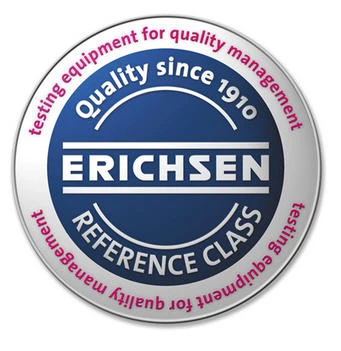Buchholz
Coatings & Industry > Physical properties > Hardness


Indentation Hardness Tester acc. to Buchholz, Model 263
Testing Principle
In the Buchholz indentation hardness test a test body of specified geometry acts for a prescribed time on the specimen using a defined test load.
After a specified recovery time the length (l) of the resulting indentation is measured using the microscope. Based on this length of impression (l) in mm, it is possible to calculate:
• Buchholz indentation hardness = 100/l (1)• depth of impression (µm, approx.) = 8 x l² (2)
Both variables are rounded up to whole numbers.
Application Range
The Buchholz impression hardness test is applicable whenever the following marginal conditions are fulfilled:
• The coating to be tested must be even and smooth with a clean surface and applied to a level substrate which will resist the test force.• There must be an adequate coating thickness (i.e. to exceed the depth of impression acc. to (1) above by at least 10 µm).• For comparison testing the specimens should have the same coating thickness; and the conditioning and testing of the specimens should be conducted under identical ambient conditions.
Since the impression test causes only insignificant damage to the coating, testing is also possible on finished products.
Design
The Indentation Hardness Tester, Model 263, consists of a metal block in which two pointed feet and the impression body are imbedded.
The impression body of carbide steel comprises a wheel of which the blade-type edge has been ground to 120°.
The instrument weighs a total of 1000 ± 5 g. The testing force has been set to range between 4.90 N and 4.95 N (equivalent to 500 to 505 g), thus meeting the requirements of all relevant standards.
The measuring microscope with a magnification factor of 20 and integrated illumination has a measuring range of 4 mm with a 0.1 mm reticle.